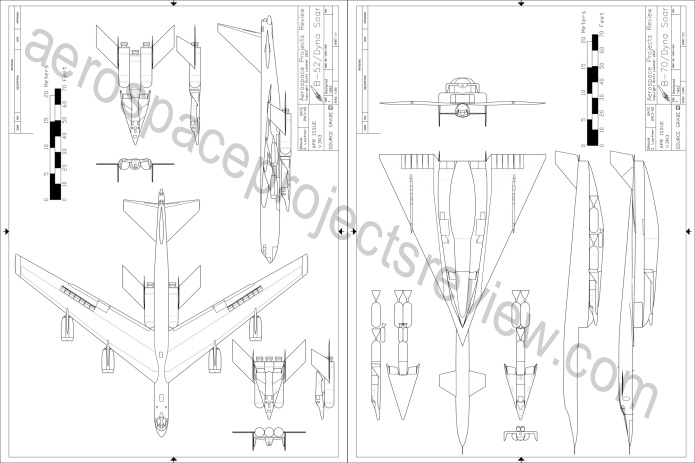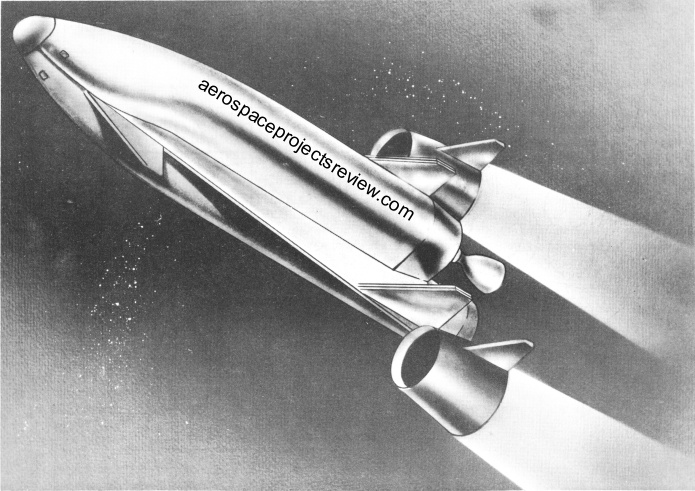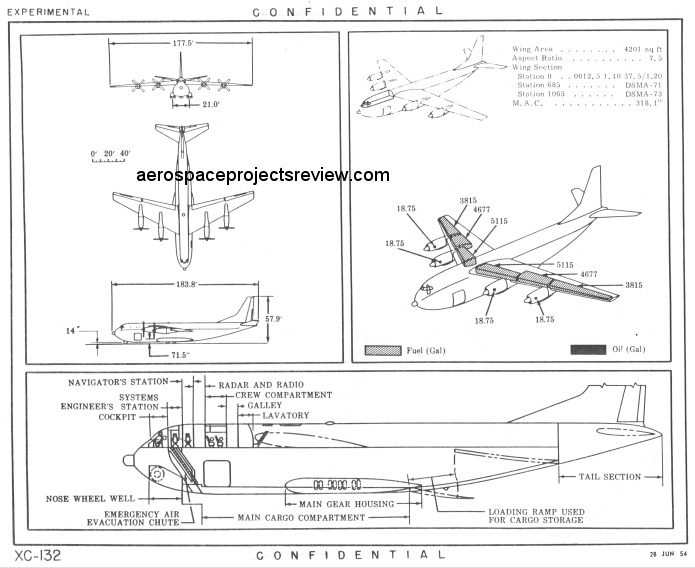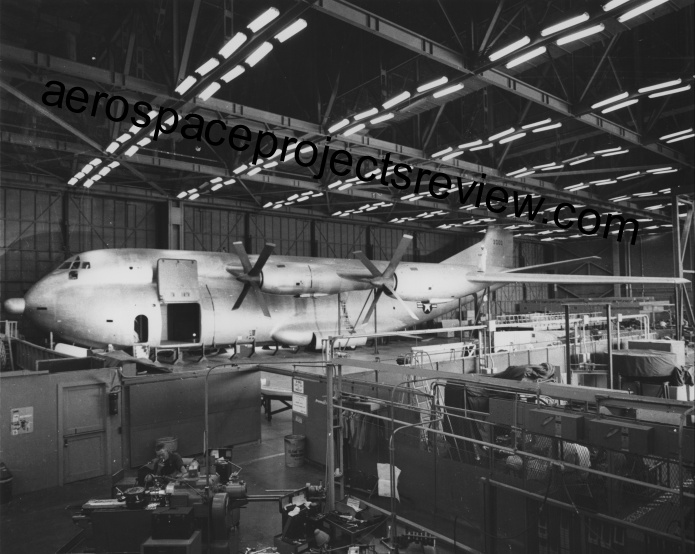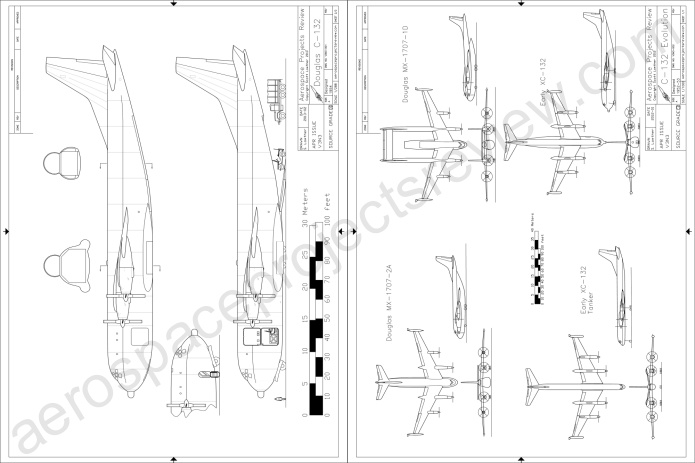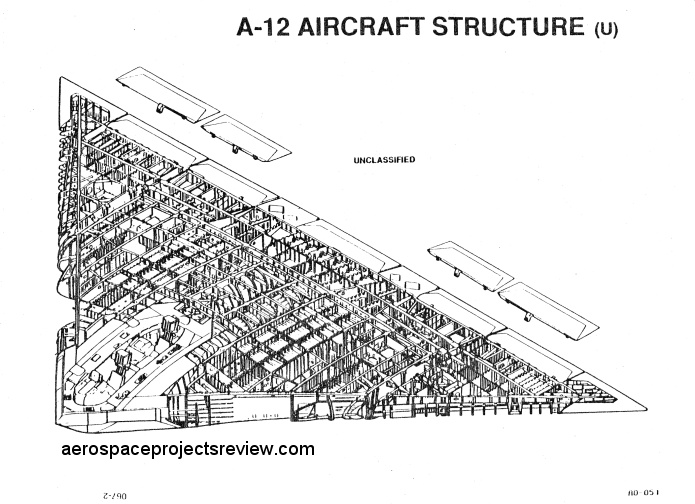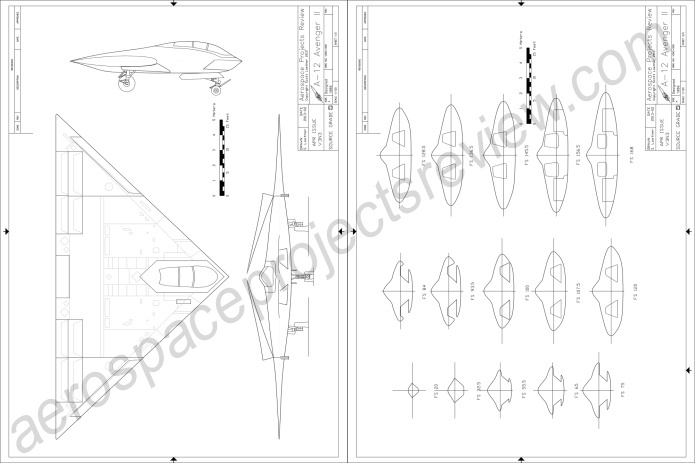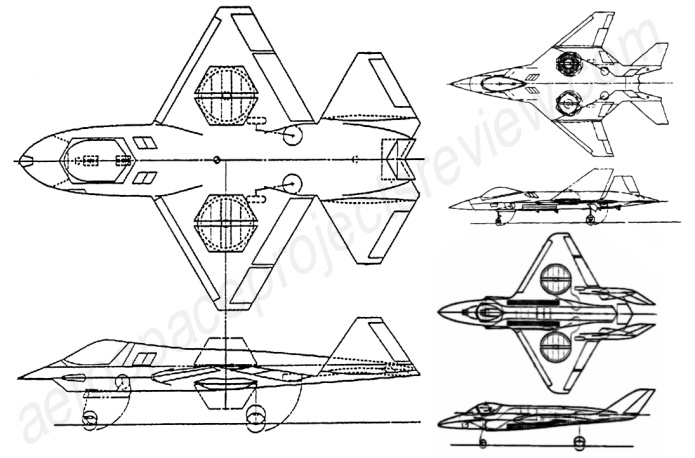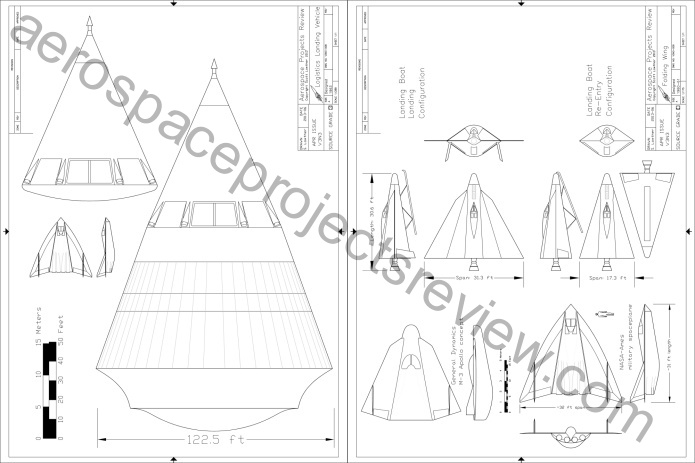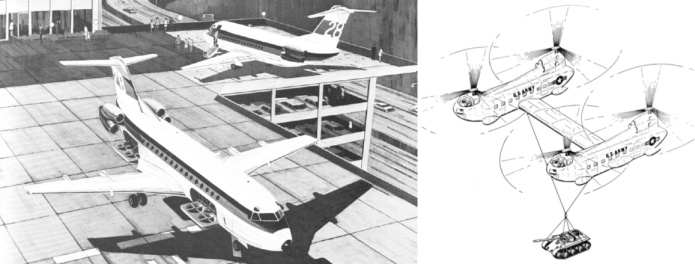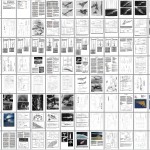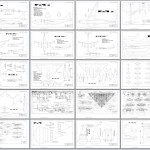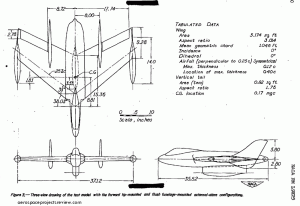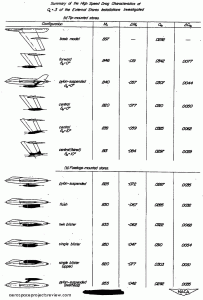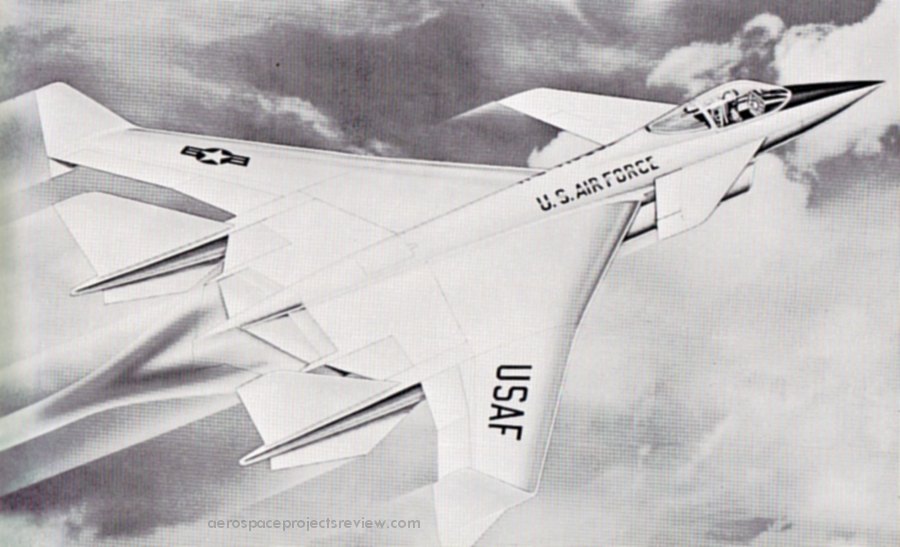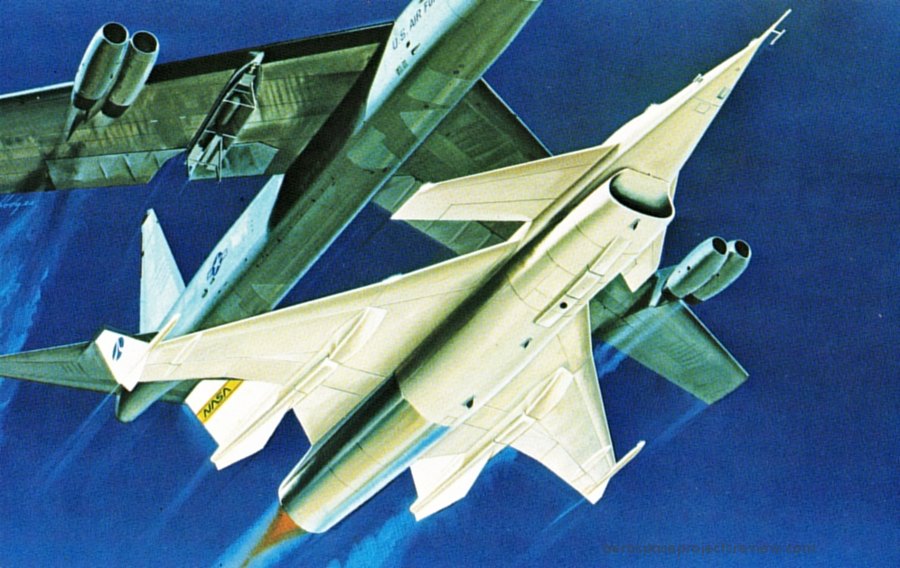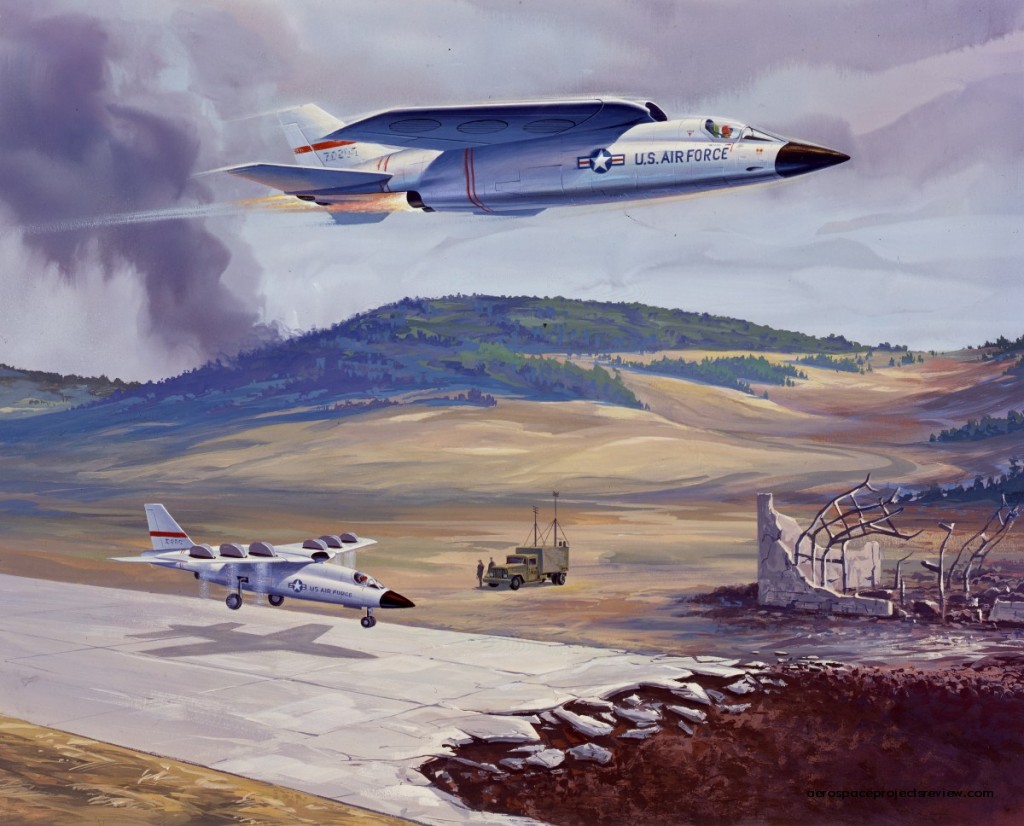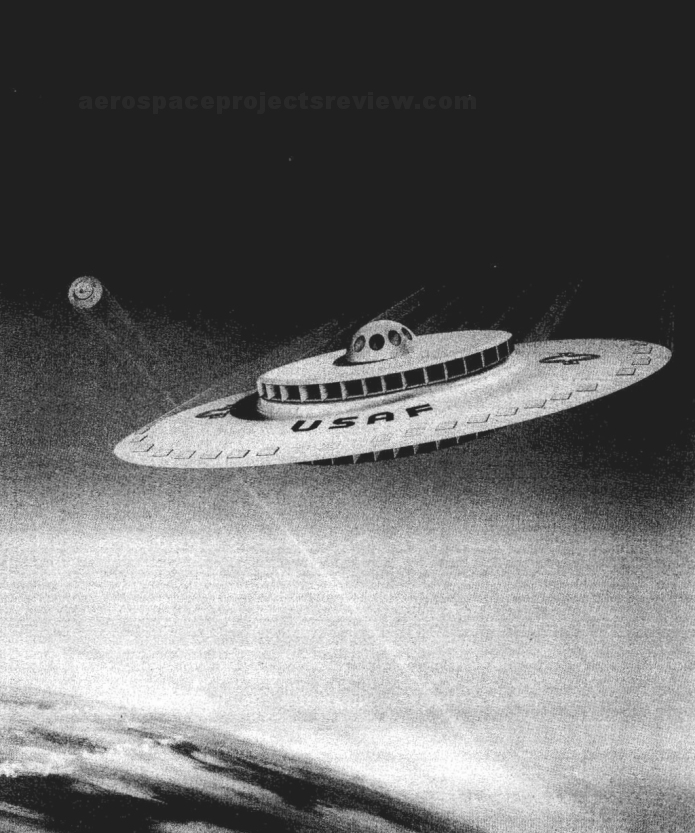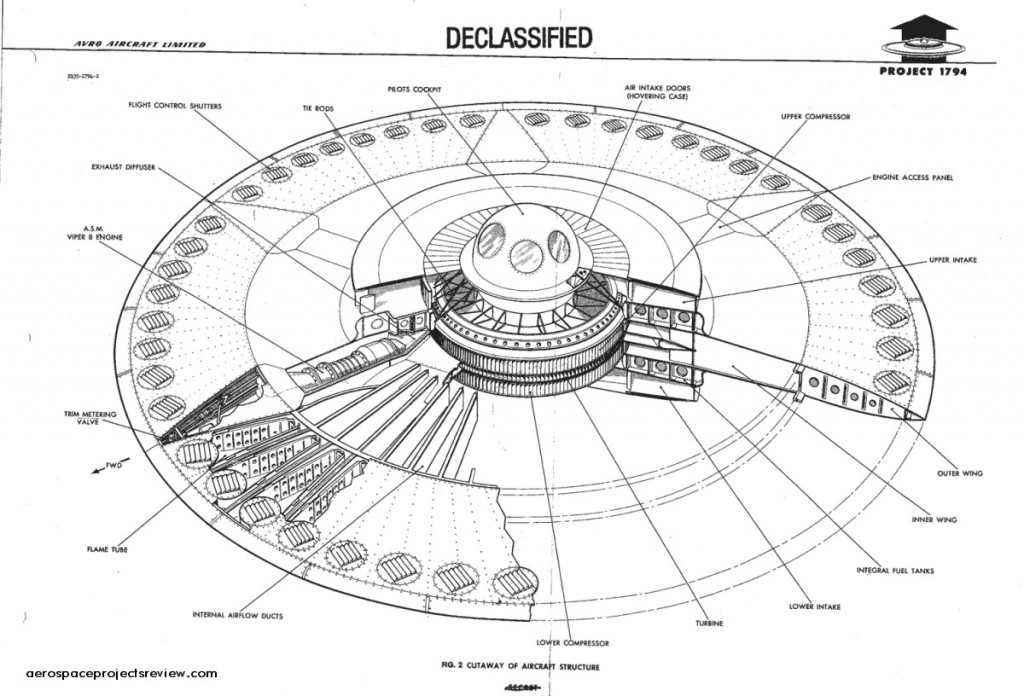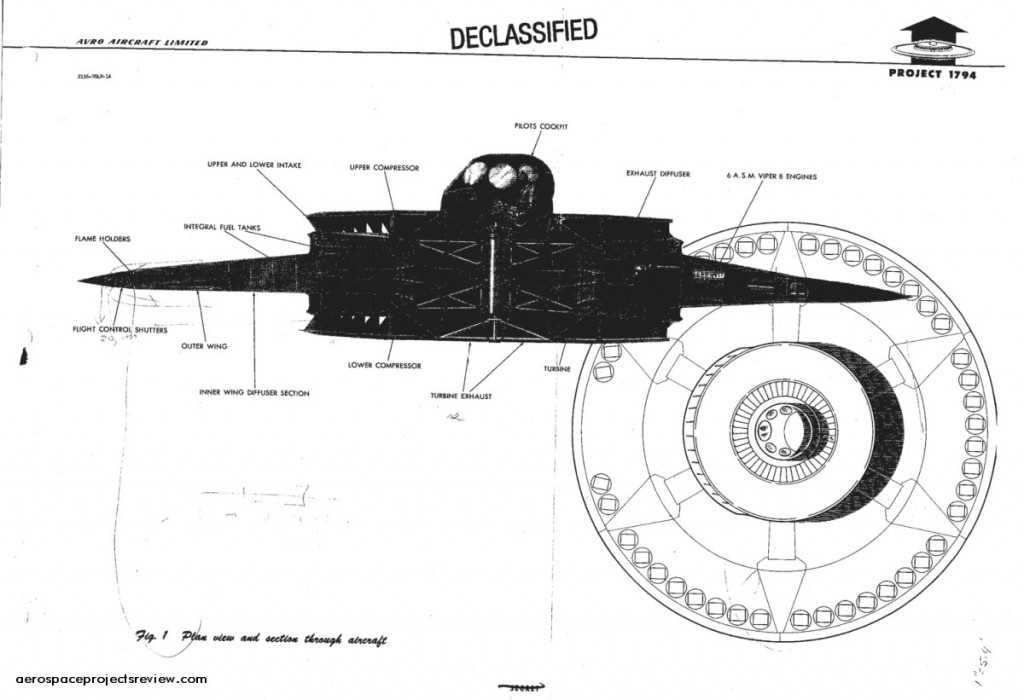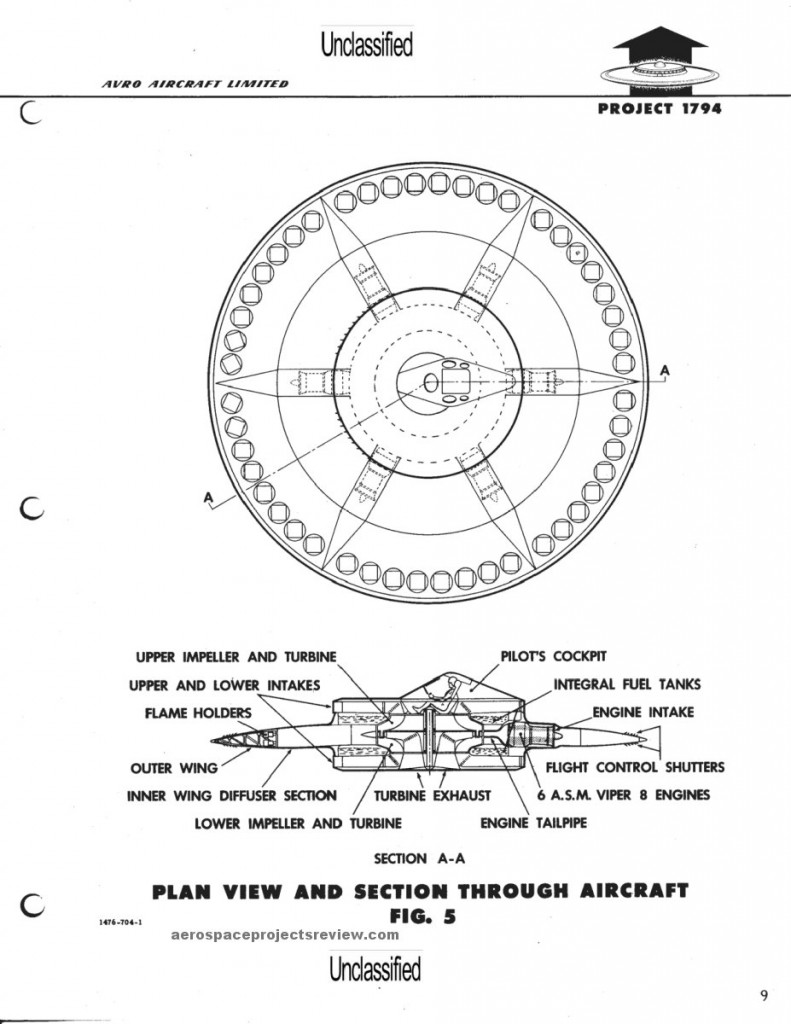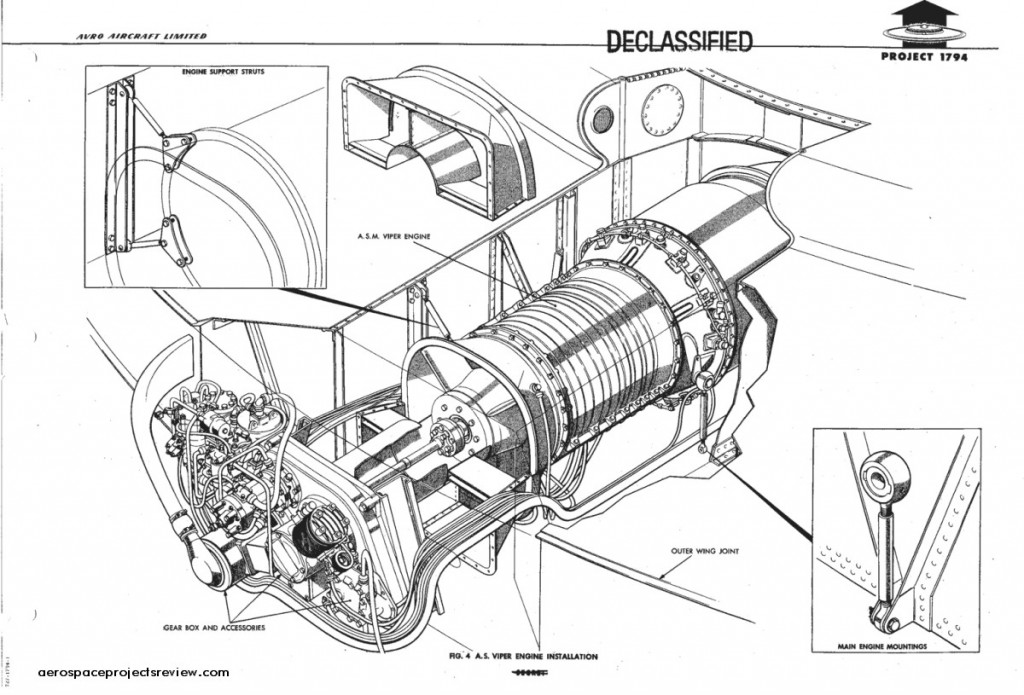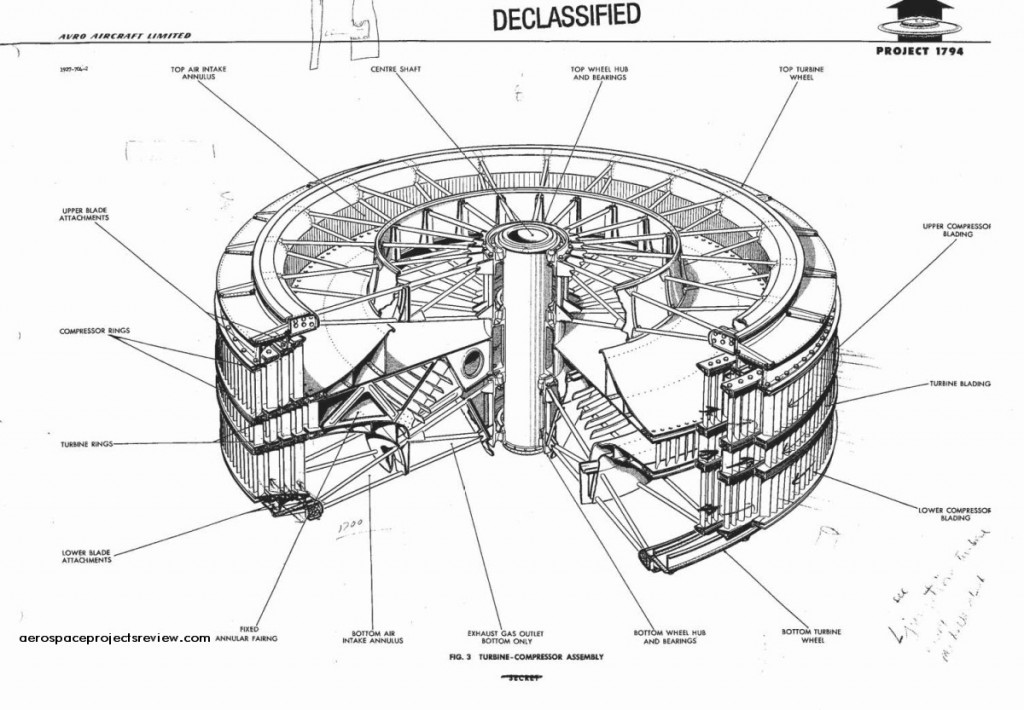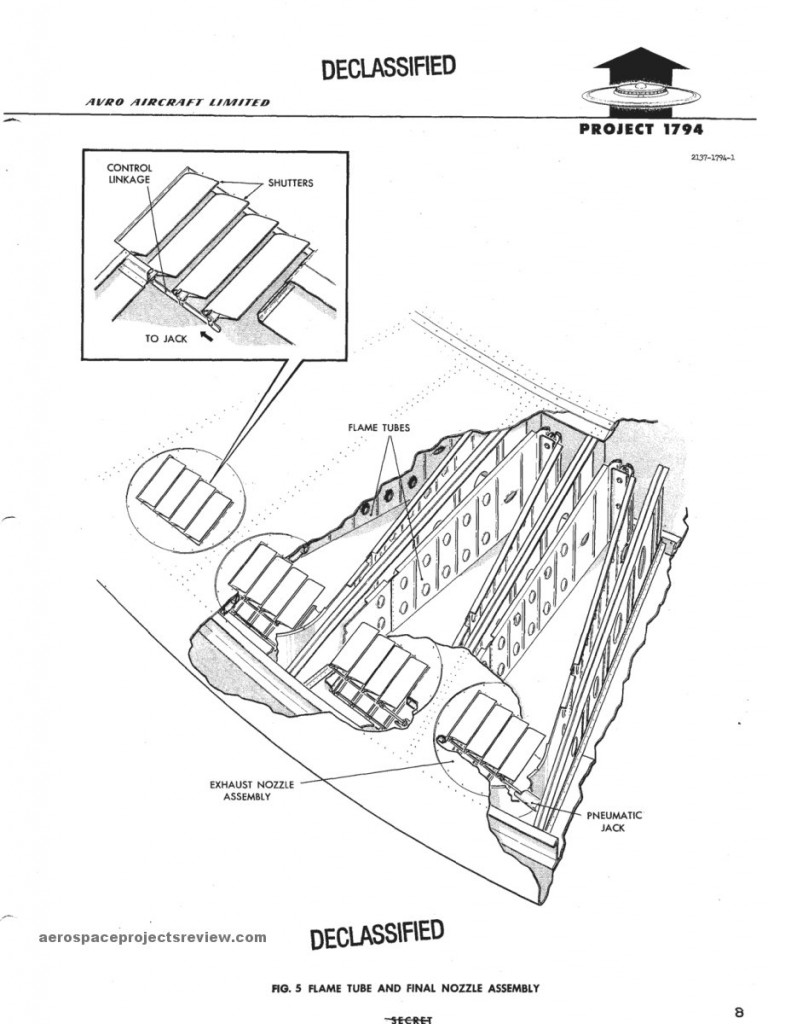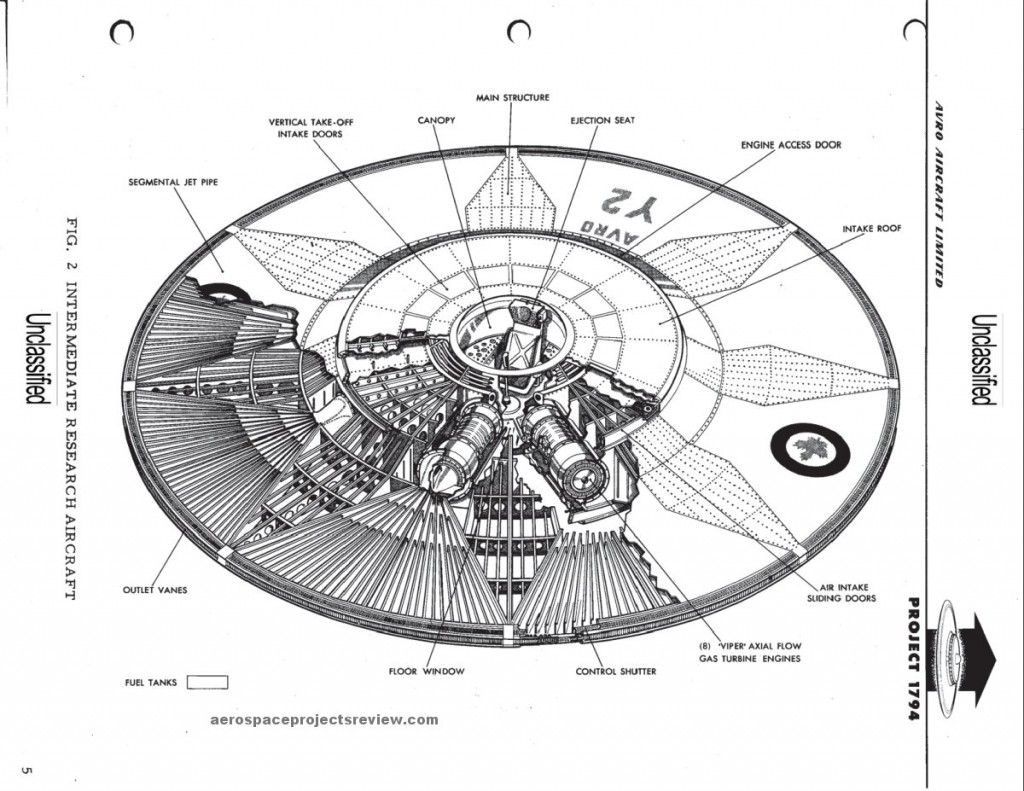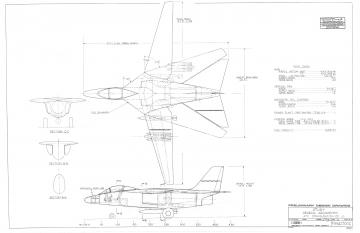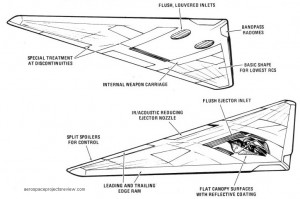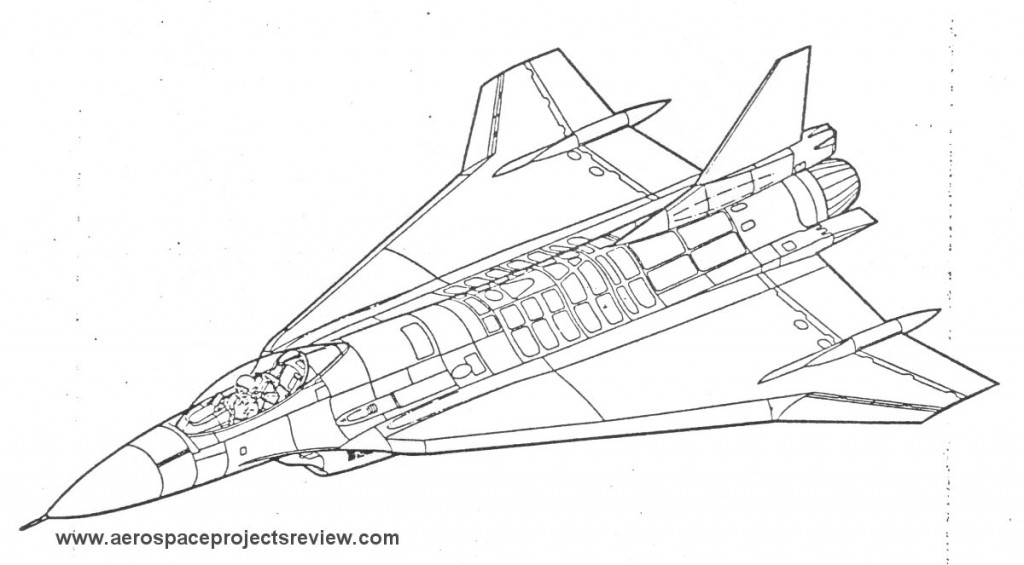At last: issue V3N3 of APR is now available. The first article covers the proposed use of bombers, specifically the B-52 and B-70, as launch platforms for the Dyna Soar manned military spaceplane.
The second article is on the Martin Astrorocket, a series of early-sixties design studies of reusable low-cost manned launch systems for the USAF.
The next article covers the development of the Douglas XC-132 turboprop transport/tanker plane throughout much of the 1950’s. This would have been by far the biggest turboprop plane the us would have built… had it been built. Article contains a number of good photos of the full-scale mockup.
Next is an article on the A-12 Avenger II stealthy strike plane for the US Navy. This article includes info and drawings on the Northrop competitor, as well as a number of rarely seen and all-new detailed diagrams of the A-12.
A brief article on a trio of Grumman designs from the 1989-1993 time period, VTOL lift-fan combat aircraft, including the Future Attack Air Vehicle (FAAV).
Last but not least, an article describing a trio of seemingly unrelated – yet possibly related – designs: a “landing boat” for Project Orion, a lifting body design for the Apollo program, and a fighter jet designed to be launched via booster rockets. Included is information on the logistics Landing Vehicle, General Dynamics’ equivalent of the Douglas ICARUS/Ithacus troop transport rocket.
And two “Aerospace History Nuggets,” a Ryan concept for a VTOL jetliner and a concept from Bell for linking two helicopters together to forma single heavy lifter.
Here’s the complete issue V3N3 layout:
It is available in three formats. Firstly, it can be downloaded directly from me for the low, low price of $8.50. Second, it can be purchased as a professionally printed volume through Magcloud; third, it can be procured in both formats. To get the download, simply pay for it here through paypal.
——–
———
To get the printed version (or print + PDF version), visit my MagCloud page:
http://scottlowther.magcloud.com/
——————
Also available: the V3N3 Addendum. This contains 30 pages formatted for 11X17. Includes larger and improved versions of all the CAD diagrams produced for V3N3, including:
- 1/72 versions of the A-12 diagrams
- Scans of the original A-12 diagrams
- 1/144 versions of the XC-132 diagrams
- 1/288 versions of the XC-132 antecedents
- 1/250 versions of the Dyna Soar/bomber launchers
- 1/72 versions of the Landing Boat, “Space fighter” and Apollo lifting body
- 1/200 version of the Nova/LLV
The V3N3 Addendum can be downloaded for only $3.00!
——–
———

